#natural dyes
Text

新しい着尺を織りはじめました。
I've just started to weave a new kimono fabric.
5K notes
·
View notes
Text
Pland dyeing some SW Merino with black hollyhock flowers


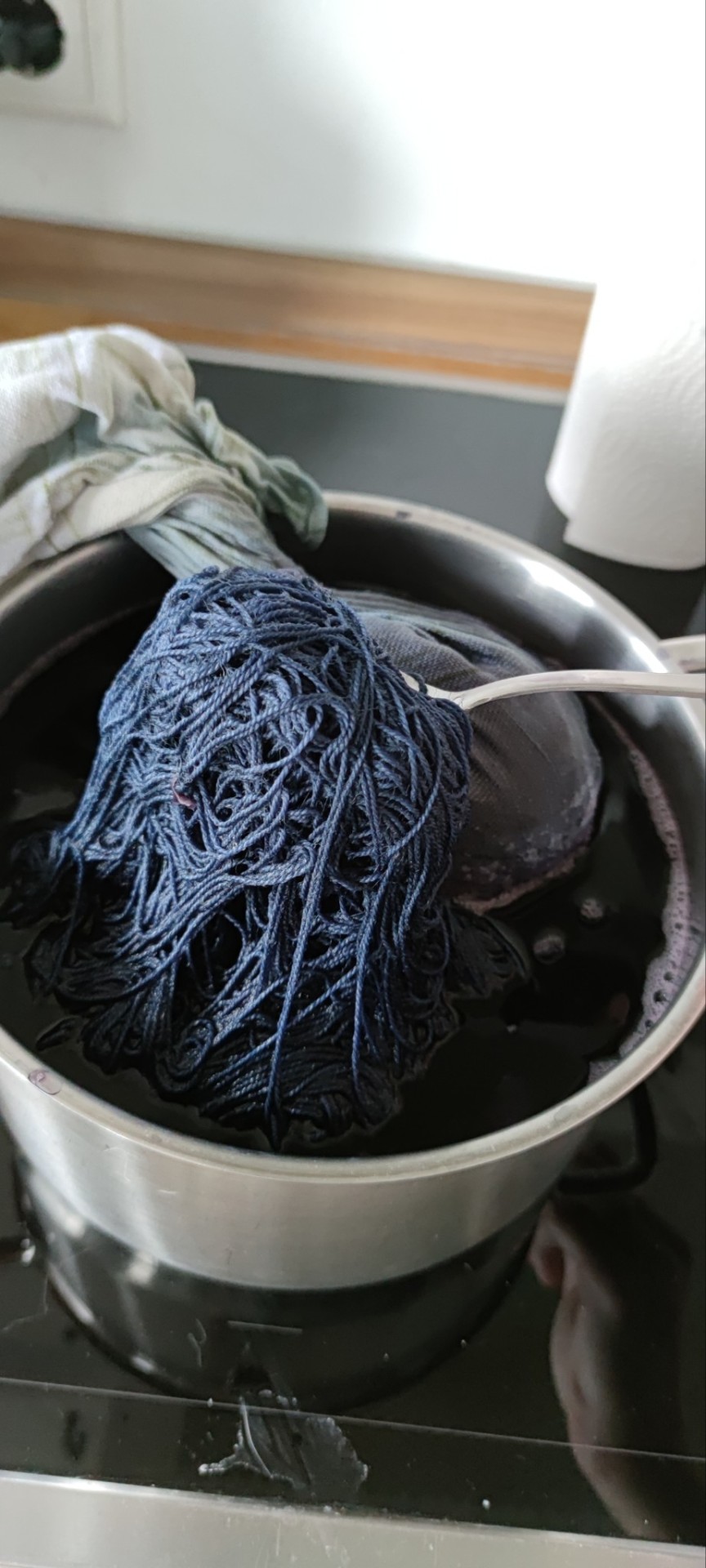
Small test that marinated in the cold dye bath for 1 minute
Yarn was mordanted on 24. November and since then was kept damp

(on the logwood yarn because I want to weave them together)
454 notes
·
View notes
Text

Natural Easter Egg dyes...
#Ostara#Easter#Natural Easter Egg Dyes#natural dyes#colour my world#tis the season#wheel of the year#easter#easter eggs
262 notes
·
View notes
Text
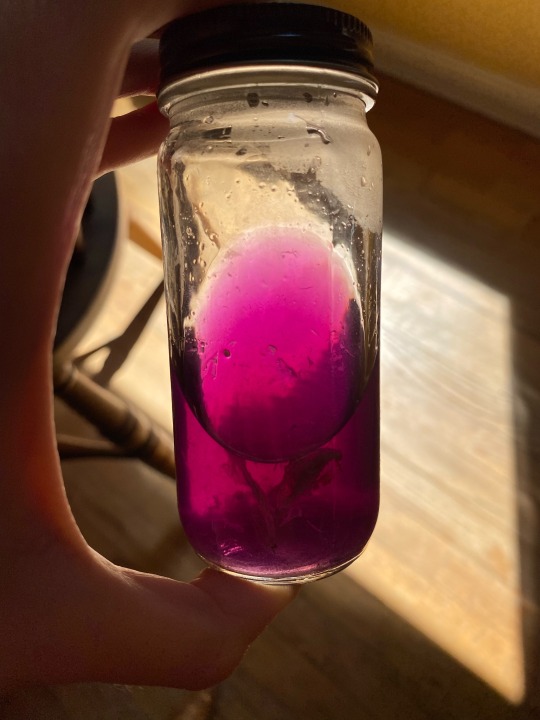

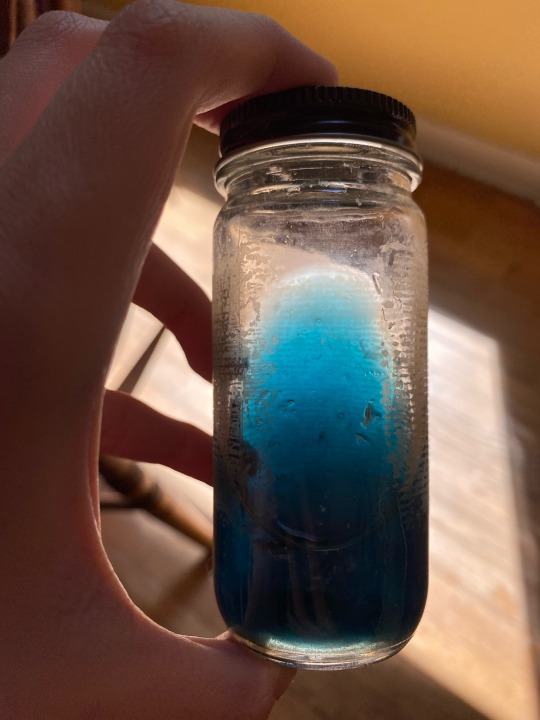
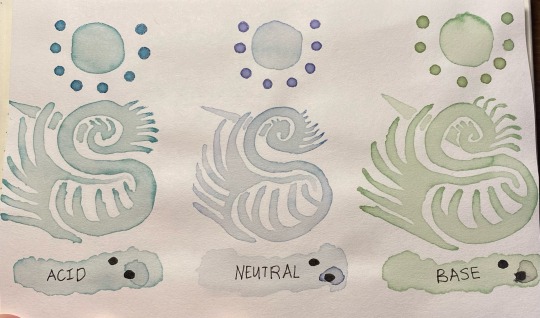
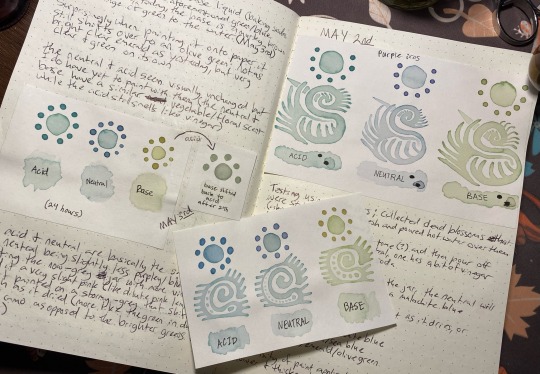



Current sample sheets and a couple pics of the liquid i've been using as watercolor, all extracted from purple iris or common violet in slightly different ways, and pH altered to give different colors due to anthocyanins (which i have been reading a bunch about and they ended up being a lot more complex than expected, and deserve their own text-heavy post, this is merely a pretty pictures post to prove i'm alive)
#art#watercolors#painting#anthocyanins#purple iris#common violet#flower paint#flower pigments#homemade paint#crafts#traditional art#natural dyes
1K notes
·
View notes
Text

I wanted to say thank you landlady @kohanakonohana for these beautiful hair ties! They're absolutely gorgeous, will share pictures of them in my hair later! She even included this adorable postcard of @straycatj , it's very cute! Everyone go support landlady!
215 notes
·
View notes
Note
Do you know much about dyeing with lichens? I don't know much about it myself but am curious on what the standpoint is from those who study them. Ethical harvesting has been a huge thing I have heard from dyers in what I have seen.
I do know a bit! I got really into collecting lichens for dying, but when it came to the actual dying part I kinda lost my hyperfocus. But everything I learned came from "Lichen Dyes: The New Source Book" by Karen Diadick Casselman, which has a great section on the ethics of harvesting. I try to only collect lichens for dying that:
I can recognize
I know are abundant
are detached from the substrate or are otherwise in danger of being destroyed
are in unprotected areas
I find plenty of material in roadside gutters, in parking lots, on walking trails and sidewalks, on broken or cut branches, at parks and just about every tiny green space around shops and office buildings, etc. etc. I would never advocate for large-scale or commercial harvesting or collection, the impact should be insignificant in the grand scheme of things, and is a great way to learn about and connect with your local lichen species.
115 notes
·
View notes
Text

Finally finished a shawl I've been working on for about 2 years (on and off - it spent over a year in a box...)
I dyed all the yarn myself using kitchen scraps (rhubarb, spinach, beetroot, cabbage, onion skins and turmeric)
211 notes
·
View notes
Text
I don't know who needs to hear this, but Auntie Arwen's doesn't just sell some of the most incredible spice blends (Ultimate Garlic Insanity will water your crops, clear your skin, and heal your grandma), but they also sell supplies for natural fabric and fibre dyeing.
#support small business#fabric dyeing#spices#medieval cooking#natural dyes#auntie arwen#mySCA#SCA#society for creative anachronism
60 notes
·
View notes
Text
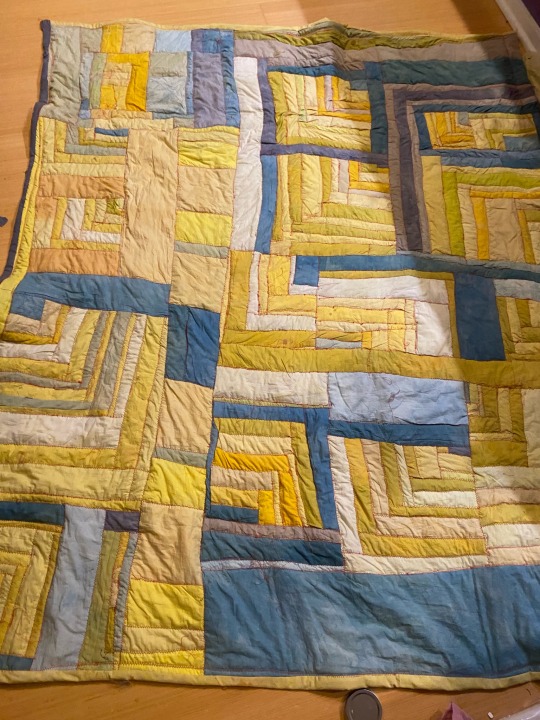
Quilt #7!
IMAGE ID: A photograph of a finished quilt composed of naturally dyed fabrics. The quilting is red thread and the blocks are mostly half log cabins, with some random rectangles thrown in there. It’s mostly yellow and blue. END ID.
#my quilts#quilting#natural dye#natural dyes#quilts#quiltblr#quilt#handmade quilt#quilters of tumblr#natural dyers of tumblr#indigo dye
172 notes
·
View notes
Text


Solar dyeing with turmeric and weaving wool on a hand loom - I feel intensely retrofuturistic today
199 notes
·
View notes
Text

ヌノのとこさわると
たぶん ちょーおこられるですので
She must be angry if I would touch her fabrics on the loom...
1K notes
·
View notes
Text

76 (more natural dyes)
259 notes
·
View notes
Text
Alrighty so this is the post on lichen dyes!
this particular bath of lichen dyes was originally started over a year ago scraping a tentatively-ID'd lecanora and/or ochrolechia genus lichen off of a fallen branch (remember, don't gather lichen when it's still growing! it's very slow growing and easy to overharvest)
to start off, this particular type of dye is made through the ammonia-fermentation method, also known as ammonia maceration. No actual bacterial fermentation occurs though. Rather, the compound orcinol (and precursor compound to orcinols) react with ammonia (N2) and oxygen to form the compound orcein (also called orchil/archil) which is what makes the final dye!
this process takes anywhere from 3 weeks to 16+ weeks depending on the lichen species, its constituent acids, the temperature, and the frequency of aeration.
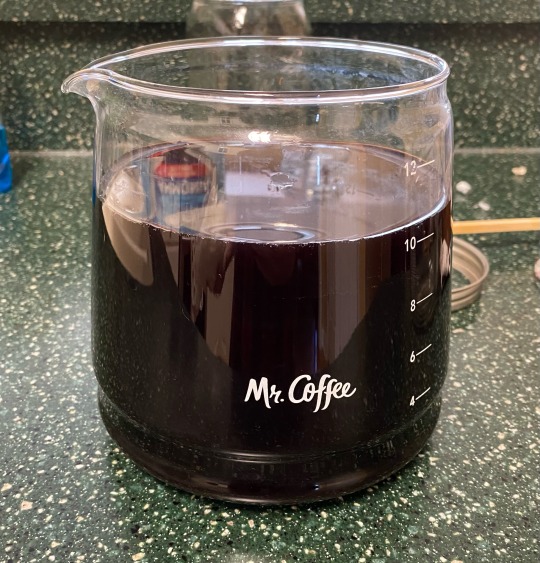
This batch was set aside for several months and neglected a good bit, but it still works. I strained out the crumbled lichens (which i set aside for later) and diluted it 1:4 as instructed by a very good book called Lichen Dyes: The New Source Book by Karen Diadick Casselman. This book is basically omnipresent everywhere you see lichen dyes mentioned, especially the orcein-based dyes. I also used several websites/videos/papers and such that i've hunted down over various internet crawls.
I use an old coffee pot for this as it's both a non-reactive material (glass) and is built to withstand heat. Ironically i also scraped the lichens off the branch using a tool i made out of a metal band from the broken handle of this same coffee pot!

I decided to dye some eri silk cakes that i fluffed up and scoured. these have been very good at absorbing dye in the past so i would hopefully get a good result from them. As lichens are a substantive dye i don't have to put a mordant on them, but i did soak them in an alum solution just before adding them to the dye bath to hopefully maximize dye uptake as well as improve fastness as lichen dyes are also fugitive and can fade in sunlight.
Substantive dyes contain mordants already embedded in them; fugitive dyes are a bit fuzzy to me but my understanding is they end up trapped in the fiber instead of actually bonding to the fiber in a stronger way. Mordants are used to help the dye "bite" onto the fiber better, improving both fastness (the ability of a due to resist fading from sunlight/washing/time) and the brightness of a color. Alum is useful in that it typically doesn't affect the end color of a dye more than simply making it slightly more strong!
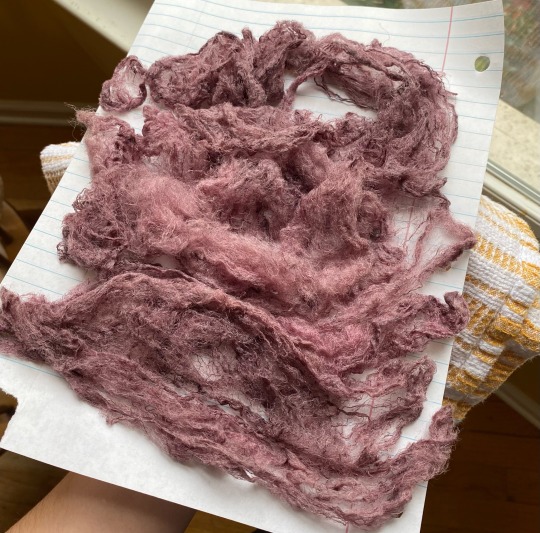
it was pretty successful i'd say! i warmed up the dyebath, added the silk, let it simmer for a few hours, let it cool down overnight, and then warmed it back up the next day for a few hours; then, when it cooled, i took it out, let it dry, then rinsed it, and let it dry a second time. At that point, it was ready for spinning!
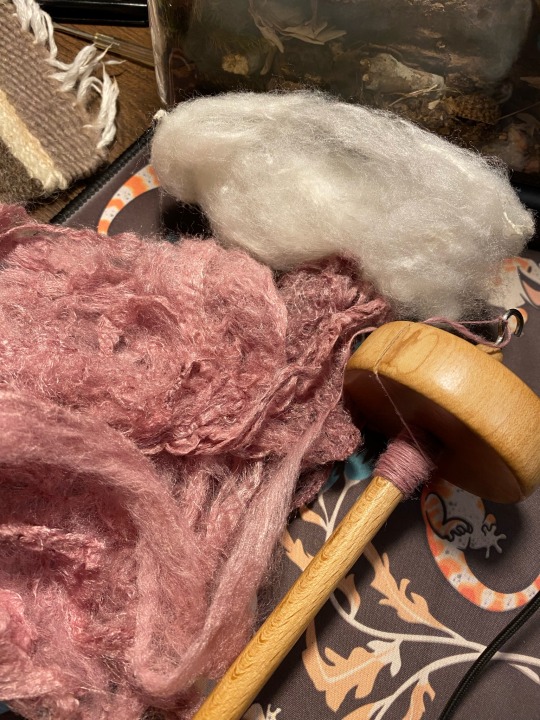
It was a lovely pink color that's not fully captured by the camera like most dyes, and eri silk is lovely because you can spin the clouds directly and easily without carding and make lovely relatively threadlike yarn

this was the first skein i got! i love how shiny the silk is. Some dyes can get really purple or even magenta-like!
next, i had the leftover lichens that i had set aside. They were a crumbly texture and dark black and i dried them out, crushed them up more, set them back in a jar, added more ammonia and water, and did the ammonia fermentation method a second time! this was after reading about the method for making french purple, and while this is definitely a very pale imitation of the method, the double-soak is the key feature here
here it is (on the left); it was already way darker purple than an in-progress lichen dye i had yet to crack open and use

speaking of which, heres a shot of various test lichens i had while working on this, you can see the blue-capped jar that has the second-soaked lichens. the foam will often give a preview of whether or not the dye will be red/purple or not!

Here it is, i forget how long i let it soak but i think it was a bit over a week. i strained the material out, diluted it, and then repeated the same warm/cool/warm/cool/dry/rinse/dry method with more eri silk

And below you can see the difference, it's definitely slight but still cool!

the left is from the original dyebath, the right is the second-soaked one. the first one is more salmon-colored while the second is a tad more blue-purpled!
I'm extremely excited about this, these dyes have such a fascinating history and have multiple historical uses everywhere from florentine orchil to norwegian korkje to scottish cudbear and more, and it was often used in tandem with the roman murex/tyrian purple dyes that come from a mussel. Some folks used the lichens to pre-dye the fabric before dyeing with tyrian purple, both to stretch the expensive tyrian purple and to make the end color more vibrant. It's all such a great topic that's mightily confusing and could take up a post of its own, same with the underlying chemistry of what makes these dyes work in the first place!
Anyways that's all for this post, i have more i'm working on involving actually turning these dyes into paint that i'll hopefully turn into a post on its own soon! I've also got other lichen dyes I'm waiting to get through the ammonia fermentation process that will hopefully give other colors, whenever that may be!
#lichen dyes#ammonia fermentaion#handspinning#natural dyes#eri silk#yarnmaking#fiber arts#vegetable dyes#orcinol#art#orcein#archil#crafts#yarn#silk#drop spindle
604 notes
·
View notes
Text
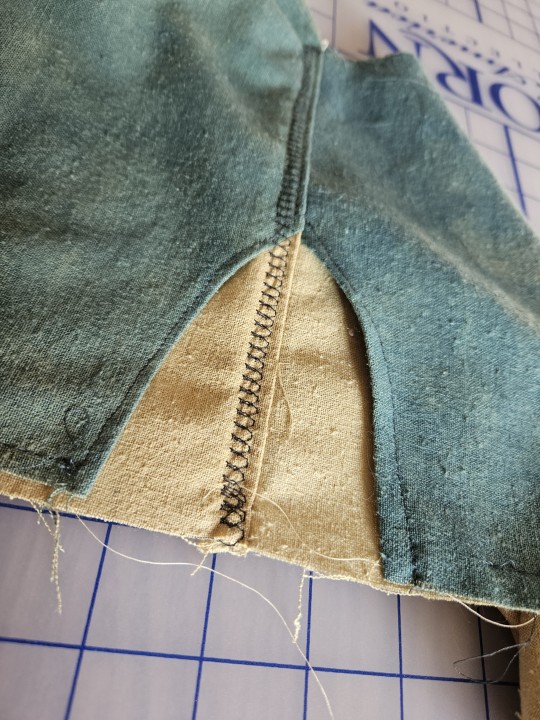
Some mornings I wake up just overflowing with excitement about all the cool things I get to work on today
35 notes
·
View notes
Text

[ source ]
45 notes
·
View notes
